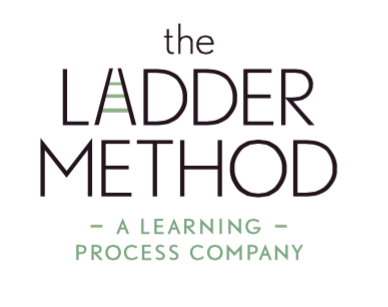10 No Stress Tips to Ace AP Exams
If you haven’t started some of these processes and are headed into AP exams, don’t look back now. There is no point in crying over spilled milk. You need to realize that some sacrifice will be involved depending, of course, on what type of score you are aiming for.
Most of our clients take full year AP courses in preparation for AP exams, so they don’t have to jump into cramming mode in April. We suggest never leaving anything to the last minute, but either way, here are some of our best secrets for how our clients succeed on their APs!
1. Teacher’s Syllabus
Find your teacher’s syllabus and course plan which they likely handed out in the first week of school. You are going to use their entire course overview as a checklist. But, in order to do that, you need to find it. My best advice is to check your teacher’s/school’s portal for a copy of the syllabus.
Believe it or not, and whether you like your teacher or not, that syllabus is a strong outline for what is going to be covered on the exam.
2. Download the AP guide from the College Board
In order to create a truly thorough checklist, you also need to pull the AP guide from the College Board. Not all teachers are created equal and not all teachers are going to give you the full preview of everything that is on the AP exam. You need to reference the AP guide specific to the subject you are studying for in order to really be as comprehensive as possible.
3. Create a Master Checklist
Go through the teacher’s syllabus and the AP guide. Use both documents to create a master checklist in Roman Numerals on a computer. Don’t even bother to rewrite these in pen on paper because time is of the essence. Also, you will need to be able to type up this list so you can repurpose it for an outline.
Writing things in pen in longhand won’t allow you to add information or copy/paste from different documents. You need to be able to bring together a lot of different information into one document. Plus I am going to show you how to create helpful flashcards for terms later! So don’t fret if you like hard flashcards, hard paper, and pen or even writing things down. You will absolutely be able to do that later!
4. Grab All Class Notes, PowerPoints, Test, Quizzes, Practice Essays, AND the Textbook
You are going to take all of this material and synthesize it down into one document. Because you need to pull all of this disparate material and put it into your brain. The only way to do that is to get everything you have so you can start filling in that outline!
We actually work on synthesizing material all year, starting in September, so that our students don’t have to wait until the last minute to pull the pieces together. They just need to review as they would on a final.
But this step is imperative no matter where you are in the process. Go find everything. Right now.
5. Use the Master Checklist to Create a Harvard Style Classic Outline
I know I’m throwing out some major terms here that you may or may not know. Don’t be alarmed. I am going to break down each term and where to find more information. If you don’t know what a Harvard-style outline is, click here for a link to the Harvard Writing Center. The complete classic style is at the bottom of the page. (And for those who are most untrusting, just Google search: Harvard style outline).
Using the checklist of major areas of study, start filling in the information using your notes, the textbook, and the teacher’s power points.
6. Read the textbook
This is a critical step. Not only does it help you study better but you need to make sure you aren’t missing anything major from your outline. The teacher’s power points are okay but they often just summarize major details that the textbook of an AP class absolutely lays out in a better format.
As an educational consultant, I know that a lot of students try not to read the textbook and just rely on the Teacher’s PowerPoint. I can name countless students whose parents came to my company thinking their child had a major learning issue. But really, they were underperforming or had performance anxiety because… they weren’t reading or studying properly!
You need to read the book to understand the class and do well on tests. Even geniuses read the textbook. If they tell you they aren’t, they are lying! While students may have survived the quizzes in a class by relying on the teacher’s PowerPoint, it won’t help those same students on something as rigorous as the AP. Not knowing the details can cost you major points on the AP exam, especially on something as rigorous as AP European History or any other textbook-heavy class-- like AP Bio, for example.
The devil is in the details. What separates those students from 5s and god forbid a 2 is that textbook. You need to read it and fill in the details. For classes like World History and AP Biology, think of the textbook like a narrative story. It gives you a more detailed view!
7. Running Out of Time
If you have left things to the last minute, you need to follow the 80/20 rule. All of the College Board subject areas lay out major areas for you to know. If you are running out of time, you are going to have to sacrifice those areas that don’t make it to the “major areas.” Spend 80% of your time on those major areas, and 20% on more detailed material not in the major areas.
8. Leave Yourself Time to Memorize
You need to scale back this level of prep for at least 1 year. The minute you get assigned the course, you should be working slowly and methodically on outlines, flashcards, and study prep.
We can’t predict outside factors that will affect your study time. Whether you were distracted by an intense Lacrosse season or someone gets sick in your family, not all of us can keep up the pace.
I suggest students memorize as they go! But all of us lose information over time. If you want to do a really thorough review, I would suggest reviewing and re-memorizing starting over Spring break!
9. Schedule Your Study Time leading Up to the Test
You want to create a study schedule that works backward from test day. If your test day is May 15, you want to work backward. Identify 1 - 2 full months of how you are going to layout the memorizing and practice plan leading up to the test.
Hopefully, your teacher has been giving you practice questions and practice essays all along. But, depending on your school, not all teachers approach their AP courses the same way. Remember to practice and find questions from years that your teacher hasn’t given you!
Finally, you don’t want to leave any memorizing or practice to the night before. Create a schedule that lets you rest and chill out the night before the exam. A good night’s rest is totally going to help.
10. Sleep Plan
The other biggest tip we give to our students is a sleep plan. You want to start practicing good sleep hygiene leading up to the exam. If the exam is a morning exam and you are not a morning person, no problem! You want to start practicing good nights of rest about 2 -3 weeks before the exam. And yes, you can learn how to head to sleep earlier. It’s actually something you can program yourself to do!
For more tips on how to study and how to ace exams, click here.










